#university of zurich
Text


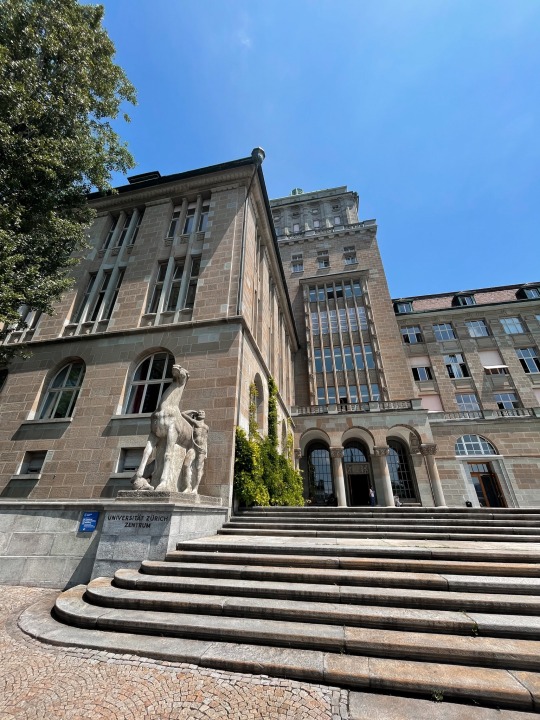

University of Zürich (Switzerland)
#zurich#university of zurich#switzerland#europe#travel#photography#view#architecture#city#travel photoset#travelphotography#travel inspo#travel photography#dark academia#cityphotography#skyline
522 notes
·
View notes
Text
A giant prehistoric dolphin has been discovered in the Amazon, whose closest relative is to be found in South Asia, revealing curious connections across continents and epochs.
#Giant Dolphin#Pebanista yacuruna#University of Zurich#Amazon Rainforest#River Dolphins#Paleontology
34 notes
·
View notes
Link
Neuroscientists at the University of Zurich have developed innovative objectives for light microscopy by using mirrors to produce images. Their design finds correspondence in mirror telescopes used in astronomy on the one hand and the eyes of scallops on the other. The new objectives enable high-resolution imaging of tissues and organs in a much wider variety of immersion media than with conventional microscope lenses.
Some species of mussels can see. Scallops, for example, have up to 200 eyes that help them detect predators such as an approaching starfish. However, the eyes of scallops differ significantly from the human eye. While in our eyes the combination of cornea and lens creates an image on the retina, in scallop eyes light is focused by a hemispherical mirror.
Optical imaging with lenses or mirrors
Creating images with mirrors instead of lenses is especially common in astronomical telescopes, in order to capture as much light as possible from planets, stars and galaxies. In the Schmidt telescope developed in the 1930s by Bernhard Schmidt (1879-1935) and still in use in many observatories today, a thin corrective lens is combined with a large spherical mirror.
Read more.
19 notes
·
View notes
Video
youtube
This video was produced by the Foreign Press Association and published on the YouTube channel of the Don't Extradite Assange (DEA) campaign on February 19, 2022. With permission from the DEA campaign, we have published this video on our channel to raise awareness of this issue in Germany and worldwide. Visit the DEA campaign's YouTube channel here: /deacampaign
ABOUT NILS MELZER. Prof. Nils Melzer is the Human Rights Chair of the Geneva Academy of International Humanitarian Law and Human Rights. He is also Professor of International Law at the University of Glasgow.
On 1 November 2016, he took up the function of UN Special Rapporteur on Torture and Other Cruel, Inhuman or Degrading Treatment or Punishment. Prof. Melzer has served for 12 years with the International Committee of the Red Cross as a Legal Adviser, Delegate and Deputy Head of Delegation in various zones of conflict and violence. After leaving the ICRC in 2011, he held academic positions as Research Director of the Swiss Competence Centre on Human Rights (University of Zürich), as Swiss Chair for International Humanitarian Law (Geneva Academy) and as Senior Fellow for Emerging Security Challenges (Geneva Centre for Security Policy), and has represented civil society in the Steering Committee of the International Code of Conduct for Private Security Service Providers. In the course of his career, Prof. Melzer has also served as Senior Security Policy Adviser to the Swiss Federal Department of Foreign Affairs, has carried out advisory mandates for influential institutions such as the United Nations, the European Union, the International Committee of the Red Cross and the Swiss Federal Department of Defence, and has regularly been invited to provide expert testimonies, including to the UN First Committee, the UN CCW, the UNSG Advisory Board on Disarmament Matters, and various Parliamentary Commissions of the European Union, Germany and Switzerland. Prof. Melzer has authored award-winning and widely translated books, including: “Targeted Killing in International Law” (Oxford, 2008, Guggenheim Prize 2009), the ICRC’s “Interpretive Guidance on the Notion of Direct Participation in Hostilities” (2009) and the ICRC’s official handbook “International Humanitarian Law – a Comprehensive Introduction” (2016), as well as numerous other publications in the field of international law. In view of his expertise in new technologies, Prof. Melzer has been mandated by the EU Parliament to author a legal and policy study on “Human Rights Implications of the Usage of Drones and Robots in Warfare” (2013) and has also co-authored the NATO CCDCOE “Tallinn Manual on the International Law applicable to Cyber Warfare” (Cambridge, 2013), and the NATO MCDC “Policy Guidance Autonomy in Defence Systems”, (NATO ACT, 2014).
Throughout his career, Prof. Melzer has fought to preserve human dignity and the rule of law through the relentless promotion, reaffirmation and clarification of international legal standards offering protection to those exposed to armed conflicts and other situations of violence.
#Julian Assange#Nils Melzer#Targeted Killing in International Law#International Red Cross#Geneva#Switzerland#University of Zurich#Human Rights Implications of the Usage of Drones and Robots in Warfare#Free Assange Now!#Academy of International Humanitarian Law and Human Rights
5 notes
·
View notes
Text
This ad shows famous male football (soccer) players doing the tricks, flicks, and scoring fantastic goals then reveals that the footage was actually of women and that the earlier clips were changed with AI.
The idea is to "seeks to challenge prejudices which exist towards women’s football"
“It’s good in reaching those audiences like the classic lad in the pub who will absolutely dump on women’s football. It’s good because it will make people second guess. And if it wasn’t men’s football stars, a lot of men wouldn’t have bothered watching it.”
“Even though more than 40 per cent of all athletes today are women, they still receive less than 10 per cent of total sports news coverage."
"A recent experiment conducted by the University of Zurich (UZH) tested to see whether gender bias existed in a group of 613 men by showing them clips of men and women’s footballers. One group watched blurred clips and were therefore unable to identify any player’s gender; another were shown the same videos unmodified with each gender clear. All participants were asked to score each performance out of five. The findings concluded that those who did not know the gender of the players did not find any significant differences with the quality of their performances. The performances of male players were only rated significantly higher compared to women when their genders were clear."
"Orange’s advert is not without its problems. It has been pointed out by more seasoned observers of women’s football online that, for all its technical brilliance, it still relies on including France’s male superstars to maximise its impact."
youtube
#World cup#football#soccer#women's sports#women's football#women's soccer#ad#University of Zurich#The Athletic#Caoimhe O'Neill#bias#gender bias#athletes#The Women’s World Cup advert that is challenging perceptions – and what it says about sport#Youtube
0 notes
Text

There are a few things in life so beautiful they hurt: swimming in the ocean while it rains, reading alone in empty libraries, the sea of stars that appear when you’re miles away from the neon lights of the city, bars after 2am, walking in the wilderness, all the phases of the moon, the things we do not know about the universe, and you.
-- Beau Taplin
#beauty#universe#reflections#beau taplin#night photography#lake zurich#beautiful#switzerland#quote#travel photography#you
162 notes
·
View notes
Text

Cosmogonic
38 notes
·
View notes
Text
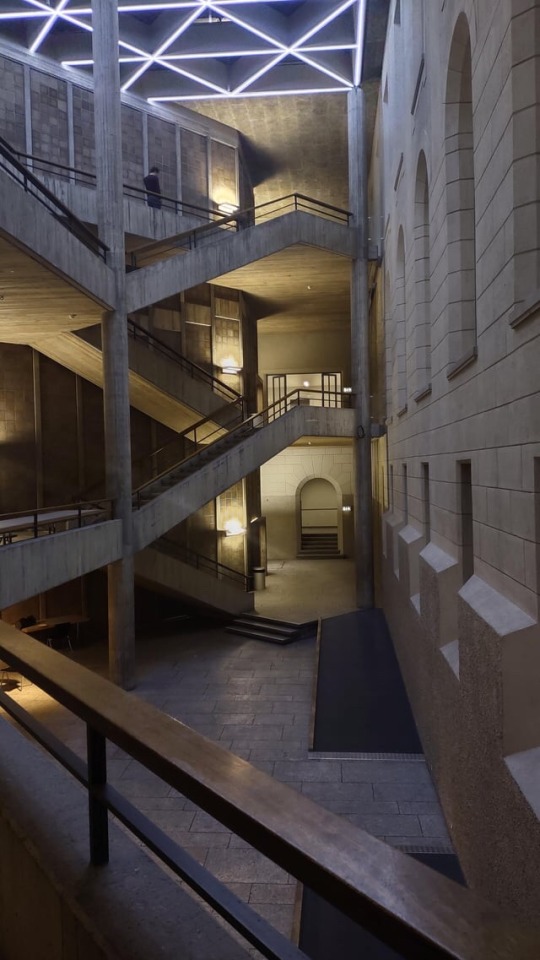
ETH Zürich university
photo by u/Jhunter_1
75 notes
·
View notes
Text
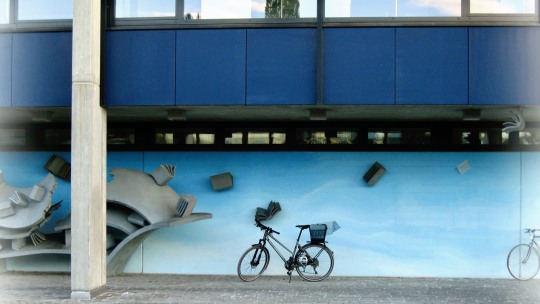
Bücher und Lesen
«In Wahrheit ist jeder Leser der Leser seines selbst», schrieb Marcel Proust im siebten und letzten Band seines Romans – Auf der Suche nach der verlorenen Zeit.
Proust hat das augenzwinkernd gemeint, aber in der Tat bietet das Lesen wie kein anderes Medium die seltene Gelegenheit, in das Innenleben eines Autors einzutauchen, die es erlaubt, die Gedankenwelt des Autors mit seinen Denken zu vergleichen und es seinem Gedankenstrom zuzufügen. Das Lesen löst eine Zufriedenheit aus, die die eigene Welt aufwertet und bereichert.
16 notes
·
View notes
Note
Come on Doc, the 32 fouettes from Swan Lake can't be that hard if Yuzuriha can also do them on a whim in ballet class!
It's one of those hyper specific things that just smacks of complete fucking weirdness to me. Why bring it up? She can do really nice ballet things without having to do "This very specific difficult frequently noted as a sign of virtuoso performance" thing. I JUST DECIDED TO CASUALLY REPLACE THIS WITH THE FOUETTES FROM SWAN LAKE okay, professional dancers have failed out of it. But yeah, you going to a Catholic boarding school in Japan, you can do it.
It's the Revue Starlight acceptance percentages all over again! You don't have to be so specific about shit unless your character can back it up! Unless it's really worth it narratively.
#Not to kiss my own ass but this is part of the reason I have Angela go to University of Zurich for med school#which is like...top 100 but not even top 25#she's a kid#she's got enough going on#she can distinguish herself later#but why I have her do a residency in LA#because its the best ER/trauma program in the world#its why fareeha just has a fuckin...online degree from the university of Manitoba ffs#just like think for five seconds!#your character can be the best sometimes but doesn't have to be all of the time at things they aren't specifically studying#Japan does in fact have ballet academies#if they wanted to study that specifically#if they're that damn good
7 notes
·
View notes
Text
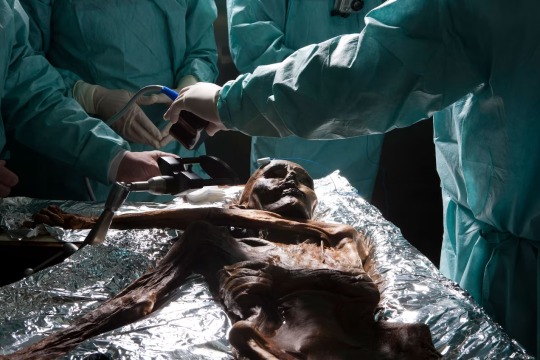
Brain samples are taken from the Copper-Age Mummy Ötzi, who was encased in ice shortly after death. This Natural Mummification preserved the body for some 5,000 years before its discovery in 1991. Photograph By Robert Clark, National Geographic Image Collection
These Mummies Were Made … By Accident?
Freeze-dried, salted, or buried in a bog: Thousands of years before humans intentionally mummified their dead, nature took care of it for them.
— By Elise Cutts | August 7, 2023
A mummy isn’t exactly something one would expect to make by accident.
Left to nature, a human body would usually be reduced to bones within a few years. Mummy-making cultures like the ancient Egyptians were only able to stave off the inevitable thanks to complex funerary practices involving all manner of specialized tools, chemicals, and procedures.
But there are paths to mummified eternity that don’t involve canopic jars, natron salts, or brain-removing hooks. In fact, some of the oldest Egyptian mummies were likely accidents, says Frank Rühli, director of the University of Zurich’s Institute of Evolutionary Medicine and head of the Paleopathology and Mummy Studies Group.
Buried in shallow graves, bodies can be naturally preserved for thousands of years by the dry heat of the Sahara’s desert air and sand. Rühli says he believes this could have inspired ancient Egyptians to start mummifying their honored dead.
Hot deserts are just one of many environments in which corpses naturally mummify. Scientists explain how environments ranging from bogs to icy mountaintops can stave off decay and—with a bit of luck—mummify bodies.
Deserts
The Egyptians aren’t the only desert culture known for their mummies. The Chinchorro people of northern Chile started to intentionally mummify their dead about 2,000 years before the Egyptians—and thousands of years before that, the Atacama Desert was doing it for them.
“One of the things that's interesting about the Chinchorro mummies is that some of them were intentionally prepared, while other were naturally mummified,” says physical anthropologist Bernardo Arriaza of the University of Tarapacá in Chile, who spent his career studying the Chinchorro mummies.
A bone-dry corpse, perhaps ironically, will likely leave more than bones.
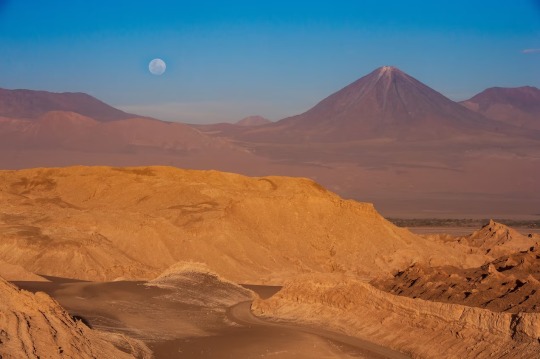
A Landscape of the Desert! The Atacama desert plateau is one of the driest places in the World. Mummies have been found here that predate ancient Egypt’s by 2,000 years. Photograph By Naftali Hilger, Laif/Redux
Decay is a biological process and without water, biology can’t work. This is why deserts preserve bodies so well and why Egyptian and Chinchorro mummification practices involved steps to dry out the body.
The oldest Chinchorro mummy, Acha Man, was naturally preserved by the desert for more than 9,000 years. Natural mummies have been found in deserts around the world. Among the most well-preserved are the Tarim mummies of Xinjiang, China, who were buried in boat-shaped coffins up to 4,000 years ago in the Taklamakan Desert.
Salt
For a handful unfortunate Iranian miners caught in cave-ins at the Chehrabad salt mine, salt did the job just as well as deserts.
"They were working in the salt mine and then it collapsed,” says Rühli, who studied the mummies. This actually happened multiple times—at least twice, says Rühli—over about 1000 years, entombing young men separated from one another by centuries in the salt they’d come to mine. Though the weight of the salt crushed the miners, flattening their corpses, the salty rock drew the water out of their bodies and mummified their squashed remains.
Salts in the dry soils of the Atacama Desert also helped preserve the Chinchorro mummies, says Arriaza. The soils are rich in nitrate compounds, nitrogen, potassium, sodium, calcium. “Mostly salts,” he says. “That's going to help dehydrate the body.”
Ice
Removing the water from a corpse isn’t the only way to stop decay. Low temperatures slow down most biological processes, and freezing a body completely can keep it from rotting for thousands of years.
Pathologist Andreas Nerlich of the Munich Klinik Bogenhausen studied Ötzi, a 5,300-year-old ice mummy who was found poking out of melting glacier ice in the Ötztal alps near the Austrian-Italian border. “They're preserved as long as the ice is there,” he says of mummies like Ötzi.
While “very rare,” adds Nerlich, ice mummies like Ötzi can be remarkably well-preserved compared to dehydrated mummies. That’s because dehydration shrivels and distorts tissues, but frozen organs mostly keep their shape.
Permafrost, earth that remains frozen year-round, can also mummify. One Siberian mummy, the 2,500 year-old Ice Maiden, was quite literally frozen in a block of ice after her burial chamber flooded and the water quickly froze. Because her burial chamber was constructed from permafrost earth, the ice that formed inside never melted.
Freeze-Drying
Combining cold and dry conditions can mummify bodies even when it’s not consistently chilly enough to keep a body frozen year-round. That’s what happened to a handful of Thule Inuit women and children in Greenland. They were naturally mummified in their graves after their deaths, likely caused by famine or disease, in the 15th and 16th centuries.
It’s a bit like natural freeze-drying, says paleopathologist Niels Lynnerup of the University of Copenhagen, who studied the mummies.
“Even though it's very cold in Greenland, it's not like it's in the high Arctic with permafrost,” he says. The bodies were buried under rocky covers or cairns, so “they still had wind blowing through.” The wind desiccated the bodies and, combined with the bacteria-slowing effect of cold temperatures, mummified them.
Many of the Inca mummies discovered high on Andean mountaintops were preserved by freeze-drying, too. The exceptionally well-preserved Maiden of Llullaillaco, the mummy of a teenage Inca girl left to succumb to cold on an Andean mountaintop as a sacrifice, is a unique case as she was frozen solid.
Even the conditions in cool, dry crypts can sometimes preserve remains in a similar way so long as bodies are either well-ventilated or kept under airtight conditions after being dried out, says Nerlich. Several natural mummies in crypts weren’t entirely accidents. One Upper Austrian mummy known as the Luftg’selchter Pfarrer was intentionally stuffed with water-absorbing materials and treated with salts to delay decay temporarily before he naturally mummified in his crypt.
Bogs
Natural mummification almost always involves somehow getting rid of water, either by removing it entirely or turning it into ice. So may be a bit surprising that wet, swampy bogs can preserve human remains for millennia.
The oldest bog mummy is Cashel Man, who was probably killed in a sacrifice around 2,000 B.C. His body was naturally mummified because of the unusual chemical conditions in bogs.
“There are several factors which cause human remains to be mummified in bogs,” says archaeologist Isabella Mulhall of the National Museum of Ireland. “The lack of oxygen, the cool dark environment… the [acidity] levels of the bog also has a role to play.”
A type of moss often found in bogs also helps mummify bodies, Mulhall adds. Sphagnum moss releases an acidic sugary molecule called sphagnan, which takes up the nutrients that would otherwise nourish microbes that cause decay. This helps mummify corpses—though sphagnan also leaches the calcium out of bones, weakening them.
The acidic fluids in bogs chemically alter the body, not unlike leather tanning or pickling. That’s why most bog bodies, no matter how they looked in life, have dark, leathery skin and bright red hair.
Many bog bodies appear to have met rather violent ends—a fate shared with many other natural mummies. But because luck happened to preserve their bodies, the victims of these ancient tragedies can still tell scientists about themselves and their societies. The same processes that mummify human skin and organs can also sometimes preserve undigested food in the stomach, blood, traces of disease-causing microbes, and even clues about the ecosystems and climates that ancient people lived in.
“In a sense,” says Arriaza, “all these ancient remains are time capsules.”
#Science#Copper-Age Mummy Ötzi#Natural Mummification#Robert Clark#National Geographic Image Collection#Freeze-Dried#Salted#Elise Cutts#University of Zurich’s Institute of Evolutionary Medicine#Paleopathology#Frank Rühli#Egyptians#Chinchorro people of Northern Chile 🇨🇱#Atacama Desert 🐪 🌵#Physical Anthropologist Bernardo Arriaza#University of Tarapacá Chile 🇨🇱#Egyptian & Chinchorro Mummification Practices#Acha Man#Taklamakan Desert#Chehrabad Salt Mine#Nitrogen | Potassium | Sodium | Calcium | Salts#Pathologist Andreas Nerlich | Munich Klinik Bogenhausen#Permafrost#Niels Lynnerup | University of Copenhagen#Thule Inuit Women & Children | Greenland 🇬🇱#Isabella Mulhall | The National Museum of Ireland 🇮🇪#Cashel Man
1 note
·
View note
Photo

The chaotic early phase of the solar system!
Before the Earth and other planets formed, the young sun was still surrounded by cosmic gas and dust. Over the millennia, rock fragments of various sizes formed from the dust. Many of these became building blocks for the later planets. Others did not become part of a planet and still orbit the sun today, for example as asteroids in the asteroid belt.
Researchers from ETH Zurich and the National Centre of Competence in Research (NCCR) PlanetS, in collaboration with an international team, analysed iron samples from the cores of such asteroids that landed on Earth as meteorites. In doing so, they unravelled part of their early history during the time when planets formed. Their findings were published in the journal Nature Astronomy.
Image: Tobias Stierli, flaeck / PlanetS
#art#cgiart#chaos#solar#erath#planet#cosmos#cosmic#universe#dust#ETH zurich#NCCR#asteroid#iron#blast#orbit#tobias stierli#flaeck#planetS#wallpaper
11 notes
·
View notes
Text

New superconductors can be built atom by atom, researchers show
The future of electronics will be based on novel kinds of materials. Sometimes, however, the naturally occurring topology of atoms makes it difficult for new physical effects to be created. To tackle this problem, researchers at the University of Zurich have now successfully designed superconductors one atom at a time, creating new states of matter.
What will the computer of the future look like? How will it work? The search for answers to these questions is a major driver of basic physical research. There are several possible scenarios, ranging from the further development of classical electronics to neuromorphic computing and quantum computers.
The common element in all these approaches is that they are based on novel physical effects, some of which have so far only been predicted in theory. Researchers go to great lengths and use state-of-the-art equipment in their quest for new quantum materials that will enable them to create such effects. But what if there are no suitable materials that occur naturally?
Read more.
13 notes
·
View notes
Text
森林と気候の変化が水循環に及ぼす影響と水文研究に関するワークショップと現地検討会を開催しました。We held workshops and field review meetings on the effect of forest and climate changes on the hydrological cycle and catchment hydrology.
チューリッヒ大学のイリヤ先生とマーク氏をお招きして、3月11日から15日にかけて生態水文学研究所およびその周辺地域で行っている研究やプロジェクトサイトにおいて、現地検討会を行いました。
Dr. Ilja van Meerveld and Mr. Marc Vis from the University of Zurich were invited to join us from March 11-15 for a field review meeting at the Ecohydrology Research Institute and project sites we are conducting in the surrounding area.
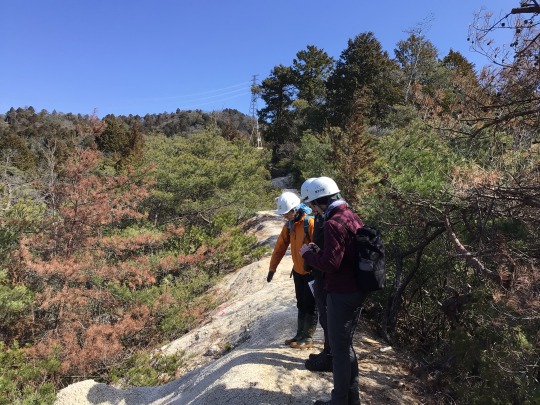
森林と気候の変化が水循環に及ぼす影響や流域水文学に関するワークショップを開催し、他大学からも水文研究を専門とする多くの研究者や学生が参加しました。
We held workshops on the effects of forest and climate changes on the hydrological cycle and catchment hydrology. Many researchers and students specializing in hydrological research from other universities also joined.
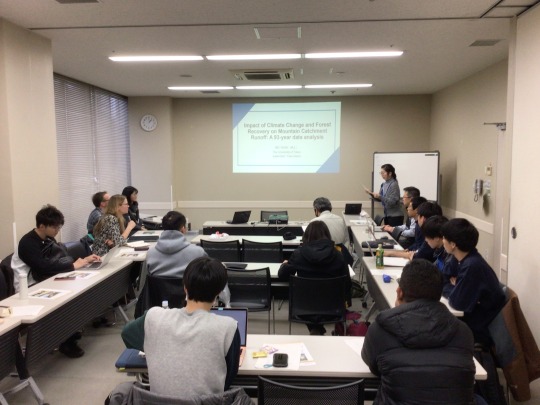
学生からの質問や議論が活発に行われ、大いに盛り上がりました。
The event was very successful, with students asking questions and engaging in lively discussions.

イリヤ先生による森林科学セミナー「森林の回復と土壌発達が斜面の流出プロセスに及ぼす影響」は対面とオンラインによるハイブリットで実施され、多くの参加者がありました。
Forest science seminar by Dr. Ilja van Meerveld, "Effects of forest restoration and soil development on hillslope runoff processes," was conducted in a hybrid format, face-to-face and online, and there were many participants.

会場で参加した研究者からも多くの質問が寄せられました。
The researchers who attended the event, asked many questions.
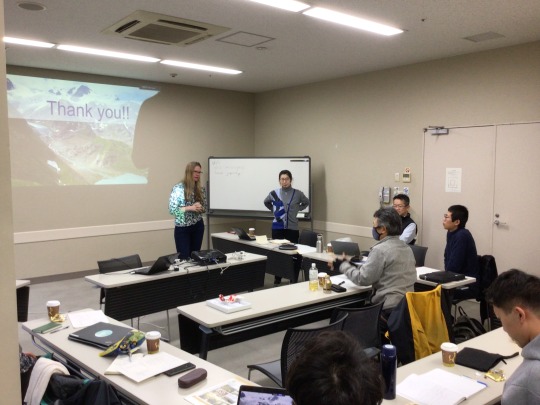
オンラインでの参加者からはパソコン越しに質疑応答をしました。
Online participants asked and answered questions over the computer.
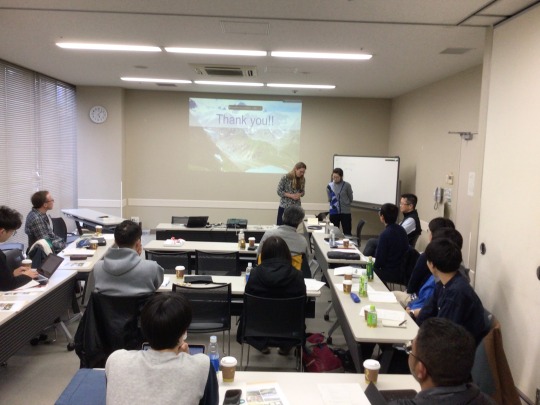
多くの参加者にとって、とても有意義なワークショップとなりました。
The workshop was very meaningful for many participants.

1 note
·
View note
Photo

Zurich University Library, Switzerland
0 notes
Photo

Zurich University Library, Switzerland
1 note
·
View note